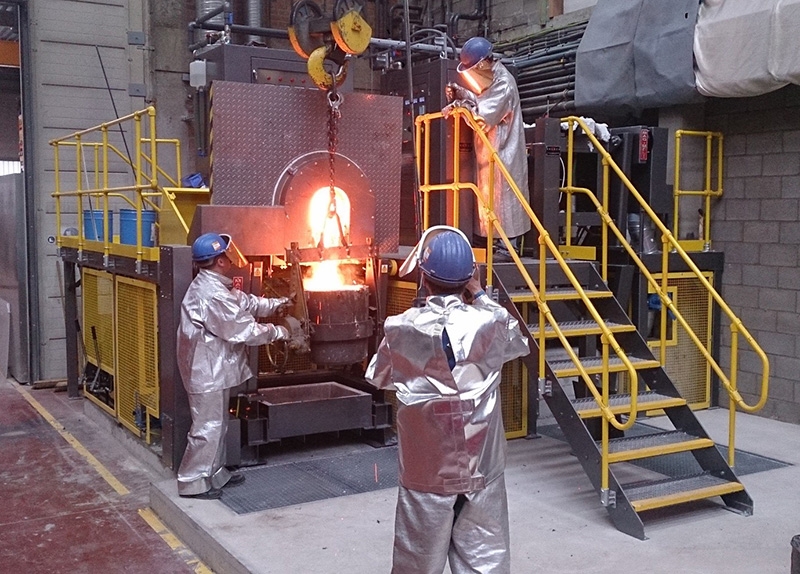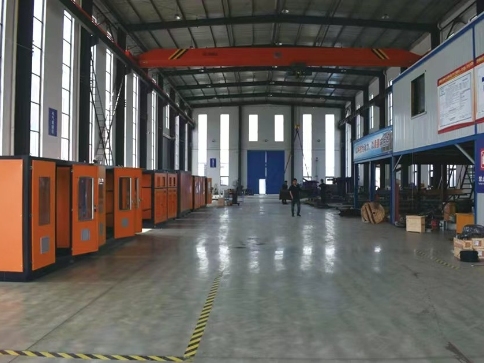Medium Frequency Induction Furnace for Efficient Aluminum Melting
Aluminum melting involves heating aluminum until it becomes liquid. Efficient melting is important for producing high-quality aluminum products. Induction furnaces are commonly used in this process. The Medium Frequency Induction Melting Furnace, developed by HK Frequency Furnace, is a modern solution for melting different metals and alloys. This furnace uses medium-frequency induction heating technology. It provides precise and efficient melting conditions. As a result, it supports industrial processes where metal melting is essential. Its design improves energy usage and reduces waste. Additionally, it offers better control over the melting process.
Medium Frequency Induction Furnace (MFIF) Overview
Definition and Basic Working Principle
A Medium Frequency Induction Furnace (MFIF) is a device used to melt metals and alloys efficiently through electromagnetic induction. It operates by generating alternating currents at high frequencies, typically ranging from 1,000 Hz to 100,000 Hz. These currents flow through a coil that surrounds a crucible, a container that holds the metal to be melted.
As the alternating current flows through the coil, it creates an electromagnetic field that induces eddy currents within the metal inside the crucible. These eddy currents generate heat through the metal’s electrical resistance, rapidly and uniformly heating it until it melts. This process ensures efficient melting without wasting energy, making the MFIF a highly effective tool for industrial applications.
Comparison with Low and High-Frequency Induction Furnaces
Induction furnaces vary in their frequency ranges: low-frequency, medium-frequency, and high-frequency.
Low-Frequency Induction Furnaces operate below 1,000 Hz and are suited for melting large metal batches. However, they heat the metal slowly and less evenly, making them less efficient than higher-frequency systems.
High-Frequency Induction Furnaces operate above 100,000 Hz. They provide rapid heating and precise temperature control, making them ideal for small-scale operations and high-purity metal melting. However, they are more costly and energy-intensive.
Medium-Frequency Induction Furnaces (MFIFs) operate between 1,000 Hz and 100,000 Hz, striking a balance between heating speed, energy efficiency, and batch size. MFIFs can melt larger batches of metal more evenly than low-frequency furnaces, while also providing more energy-efficient heating than high-frequency systems. This versatility makes them ideal for various industrial applications.
Components of the Medium Frequency Induction Furnace
Induction Coil
The induction coil, typically made of copper, is a crucial component of the MFIF. It surrounds the crucible and carries the alternating current, creating a changing electromagnetic field. This field induces eddy currents in the metal inside the crucible, which heats the metal to its melting point.
Power Supply (Oscillator and Transformer)
The power supply system consists of two main parts: the oscillator and the transformer. The oscillator generates the high-frequency alternating current, while the transformer boosts the current to the required voltage. Together, these components control the power and frequency, ensuring the furnace operates effectively and efficiently.
Crucible and Furnace Body
The crucible holds the metal to be melted and is made from materials that can withstand high temperatures. The furnace body supports the crucible and insulates the system, ensuring heat is contained within the melting area and maintaining a safe environment for operation.
Cooling System
The cooling system is essential for maintaining the temperature of the furnace components. It typically uses water or air to prevent overheating of the induction coil and other critical parts. Effective cooling is vital for the furnace’s longevity and efficient operation.
Working Principle of MFIF for Aluminum Melting
Electromagnetic Induction in Aluminum
The basic principle of MFIF is electromagnetic induction. When alternating current flows through the induction coil, it generates a varying magnetic field that penetrates the aluminum in the crucible. This varying magnetic field induces eddy currents in the aluminum, which causes the metal to heat up.
Heat Generation and Energy Transfer
The eddy currents generated by the electromagnetic field create heat within the aluminum. This heat is a result of the electrical resistance of the aluminum. The energy from the currents is transferred directly to the metal, causing it to heat up rapidly and efficiently.
Control of Temperature and Melting Process
Temperature control is critical in aluminum melting. The MFIF allows for precise adjustments to the power and frequency of the alternating current, ensuring the aluminum is heated to the optimal temperature for melting. Proper temperature control prevents defects and ensures the final product meets quality standards.
Key Benefits of MFIF for Aluminum Melting
Energy Efficiency and Reduced Power Consumption
MFIFs are energy-efficient, utilizing medium-frequency currents that allow for faster heating and reduced energy consumption. This results in a more cost-effective and environmentally friendly melting process with less wasted energy.
Faster Melting Time
The efficient heat generation of MFIFs accelerates the melting process, allowing aluminum to melt much more quickly than with traditional methods. This reduction in melting time boosts production rates and helps meet industrial demands.
Precise Temperature Control
MFIFs provide precise control over the melting temperature. This accuracy is crucial for ensuring uniform melting, reducing defects, and enhancing the quality of the final aluminum product.
Improved Metal Quality (Reduced Oxidation and Contamination)
The controlled heating environment in MFIFs minimizes oxidation and contamination of the aluminum, preserving its purity. This leads to a higher quality metal with superior properties, making it more suitable for various applications.
Environmental Benefits (Lower Emissions)
The energy-efficient nature of MFIFs also translates into lower emissions. By using less energy, MFIFs help reduce the carbon footprint of the melting process. Additionally, their efficiency minimizes waste, contributing to more sustainable industrial practices.
Applications in Aluminum Melting
Aluminum Casting for Automotive and Aerospace Industries
MFIFs are extensively used in aluminum casting for the automotive and aerospace sectors. These industries demand high-quality aluminum components with precise specifications. MFIFs deliver consistent melting, ensuring reliable, high-strength aluminum parts for vehicles and aircraft.
Recycling of Aluminum Scrap
MFIFs are also vital in the recycling of aluminum scrap. They offer an efficient, cost-effective way to melt scrap metal, helping to conserve natural resources and reduce waste. By reusing aluminum scrap, manufacturers can create new products while lowering material costs.
Production of High-Quality Aluminum Alloys
MFIFs are ideal for producing high-quality aluminum alloys, which require strict temperature control to achieve the desired properties. By providing precise heat control, MFIFs enable the production of strong and durable alloys used across various industries, such as construction, electronics, and more.
Final Words
Medium Frequency Induction Furnaces (MFIFs) make aluminum melting better. They use energy wisely and melt metal quickly. MFIFs produce high-quality aluminum with less waste. Many industries, like automotive and aerospace, benefit from using MFIFs. These furnaces help businesses save money and protect the environment.
Upgrade to MFIF technology today. Improve your aluminum production now. Contact us for more details. Start enhancing your processes today.


